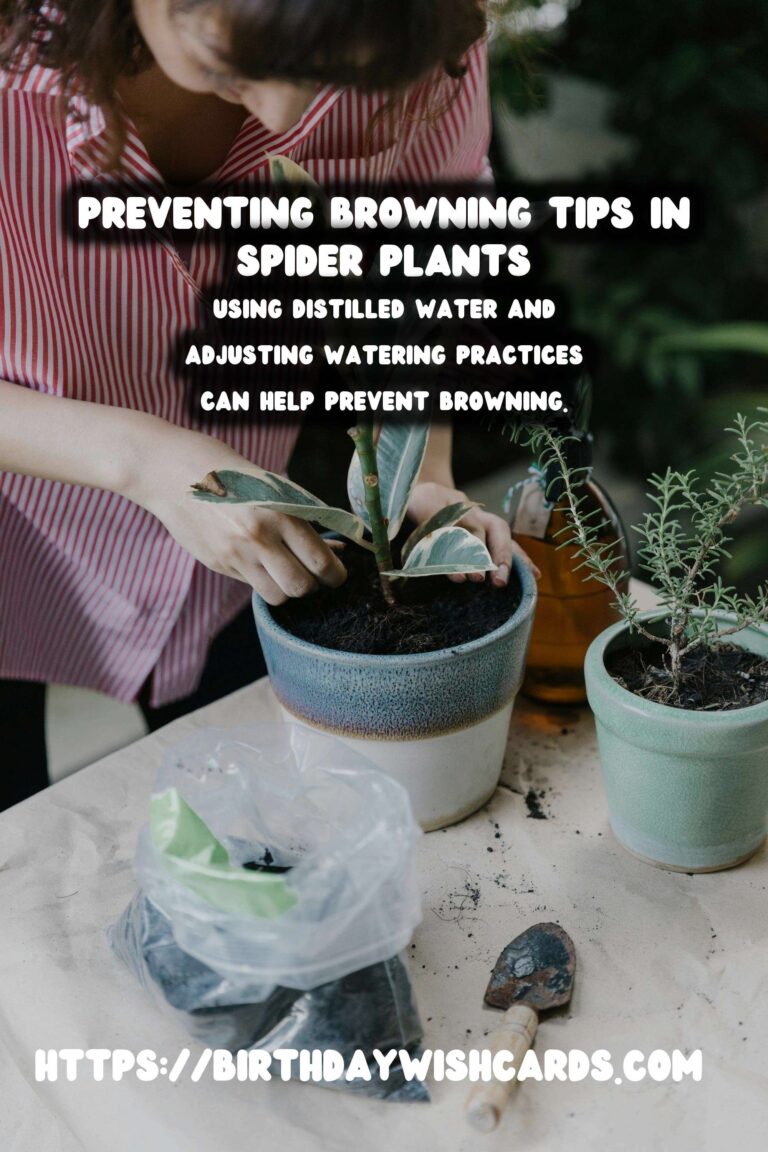
Spider plants, known for their arching leaves and spider-like offshoots, are popular houseplants due to their easy care and air-purifying qualities. However, many plant enthusiasts encounter the common problem of browning tips on their spider plants. Understanding and addressing the causes of browning tips can help you maintain a lush, healthy plant.
Understanding the Causes of Browning Tips
There are several reasons why the tips of your spider plant’s leaves may turn brown. Identifying the specific cause is crucial for effective treatment and prevention.
1. Water Quality
Spider plants are sensitive to the chemicals commonly found in tap water, such as fluoride and chlorine. These chemicals can accumulate in the soil, leading to brown tips. Opt for distilled water or rainwater to minimize this issue. If using tap water, let it sit out for 24 hours to allow chemicals to dissipate before watering your spider plant.
2. Overwatering
Overwatering can lead to root rot, which is detrimental to the plant’s health and can cause browning. Ensure the pot has adequate drainage and allow the soil to dry out between waterings. A good rule of thumb is to water when the top inch of soil feels dry.
3. Low Humidity
Spider plants thrive in humid environments. Low indoor humidity, especially in winter, can cause leaf tips to brown. Increase humidity by misting the plant regularly, placing a humidifier nearby, or setting the pot on a tray of water and pebbles.
4. Excessive Fertilizer
Too much fertilizer can lead to salt buildup in the soil, causing leaf tips to brown. Feed your spider plant with a balanced liquid fertilizer every two to three months during the growing season and reduce feeding during the winter months.
How to Treat Browning Tips
Once you’ve identified the cause of browning tips, taking corrective actions can help restore your plant’s health.
1. Trim Brown Tips
Carefully trim the brown tips with sterilized scissors, cutting at an angle to mimic the natural shape of the leaf. This not only improves appearance but also prevents further damage.
2. Adjust Watering Practices
Review your watering routine and adjust as needed. Ensure you’re not overwatering and use high-quality water. Consider using a moisture meter to monitor soil moisture levels accurately.
3. Increase Humidity
To increase humidity, mist the plant regularly or use a humidifier. Grouping plants together can also create a microclimate with higher humidity.
4. Flush the Soil
If you suspect fertilizer buildup, flush the soil with fresh water to remove excess salts. Ensure the pot has good drainage to prevent root rot during this process.
Preventing Future Browning Tips
Consistent care and attention are key to preventing browning tips in the future. Regularly monitor your spider plant’s environment, including light, water, and humidity levels, and adjust as necessary. By understanding your plant’s needs and responding promptly to any issues, you can enjoy a vibrant and healthy spider plant year-round.
Conclusion
While browning tips on spider plants can be frustrating, they are often a signal that your plant needs a change in care. By addressing the underlying causes and making necessary adjustments, you can ensure your spider plant remains a stunning and healthy addition to your home.
Spider plants are popular houseplants but often suffer from browning tips. Water quality, overwatering, low humidity, and excessive fertilizer can cause browning tips. Using distilled water and adjusting watering practices can help prevent browning. Increasing humidity and trimming brown tips can restore plant health. Consistent care is key to preventing future browning tips. 
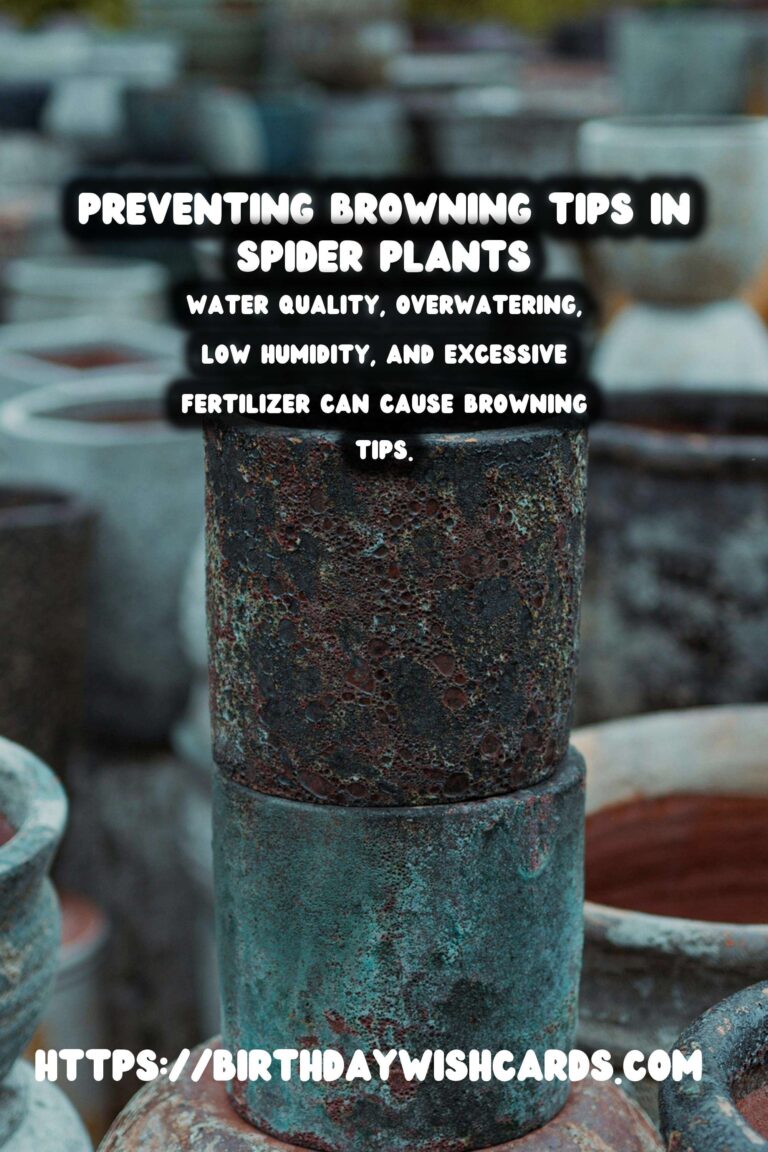
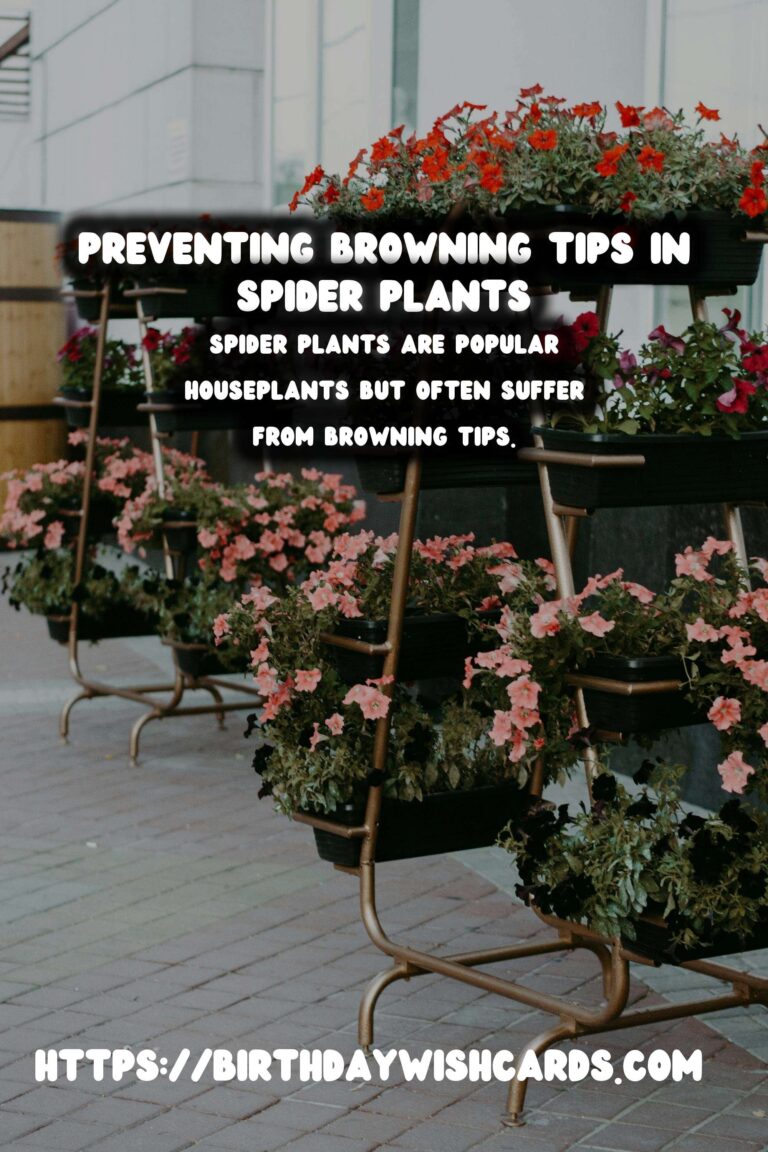
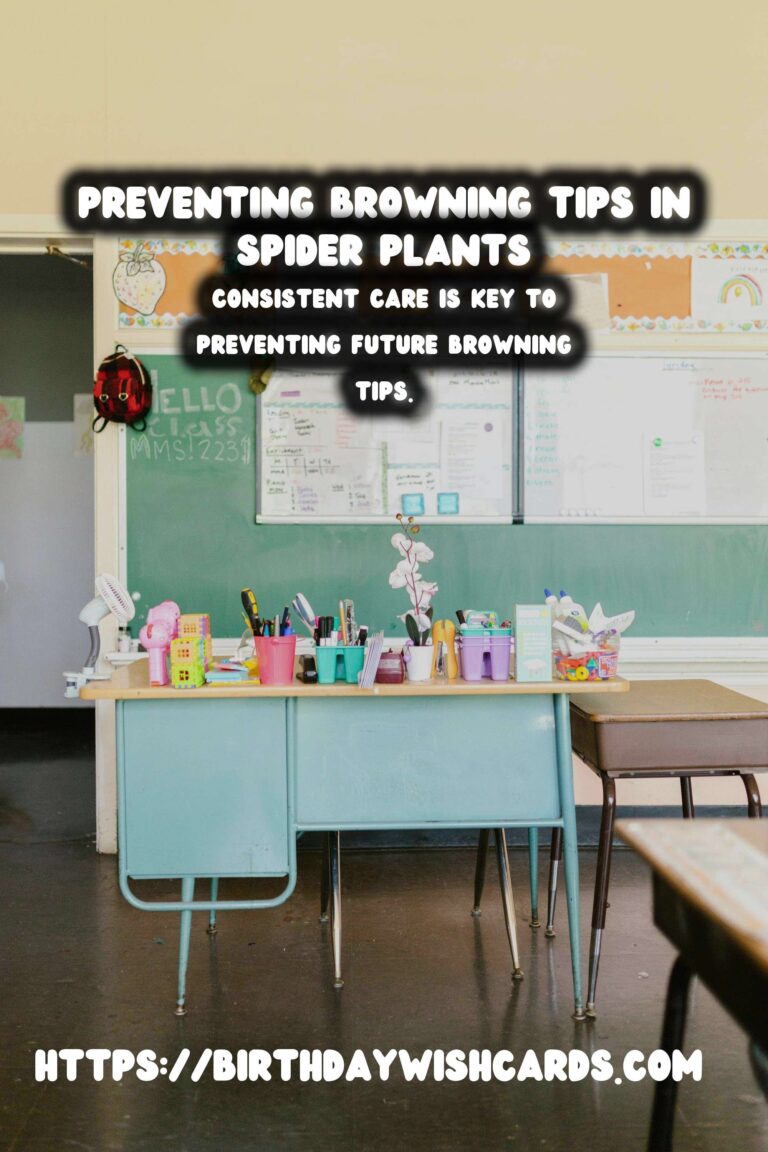
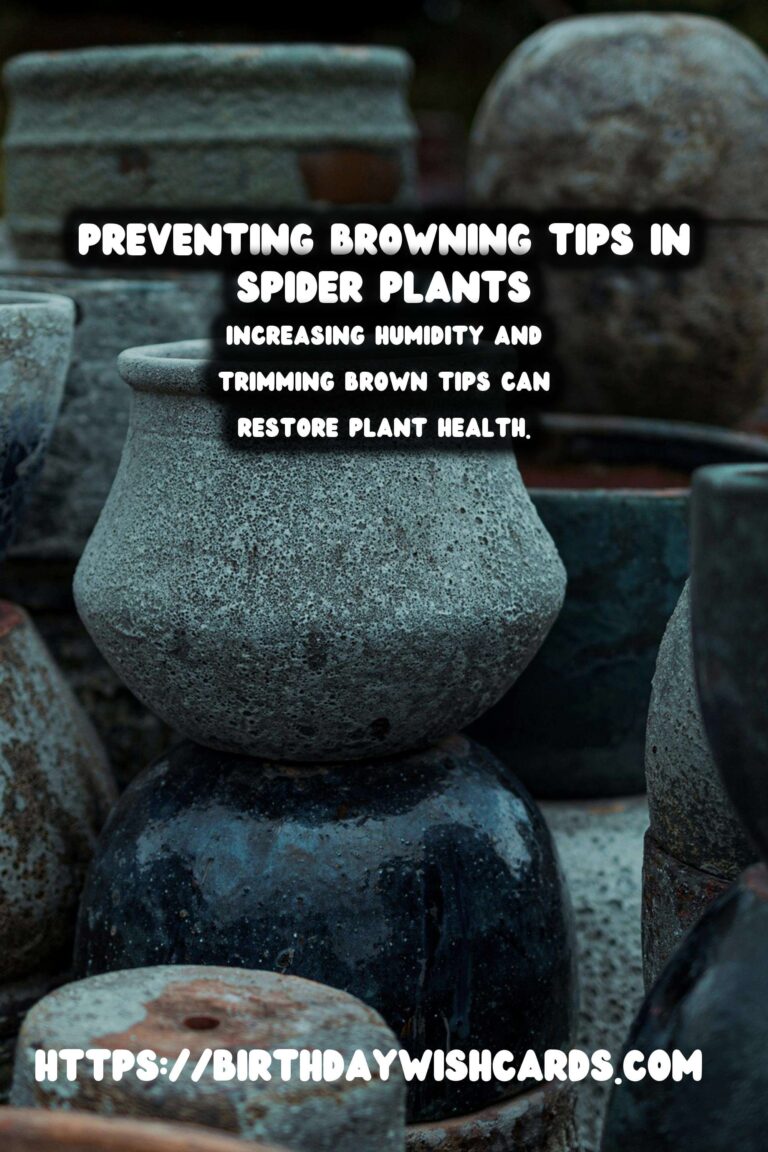
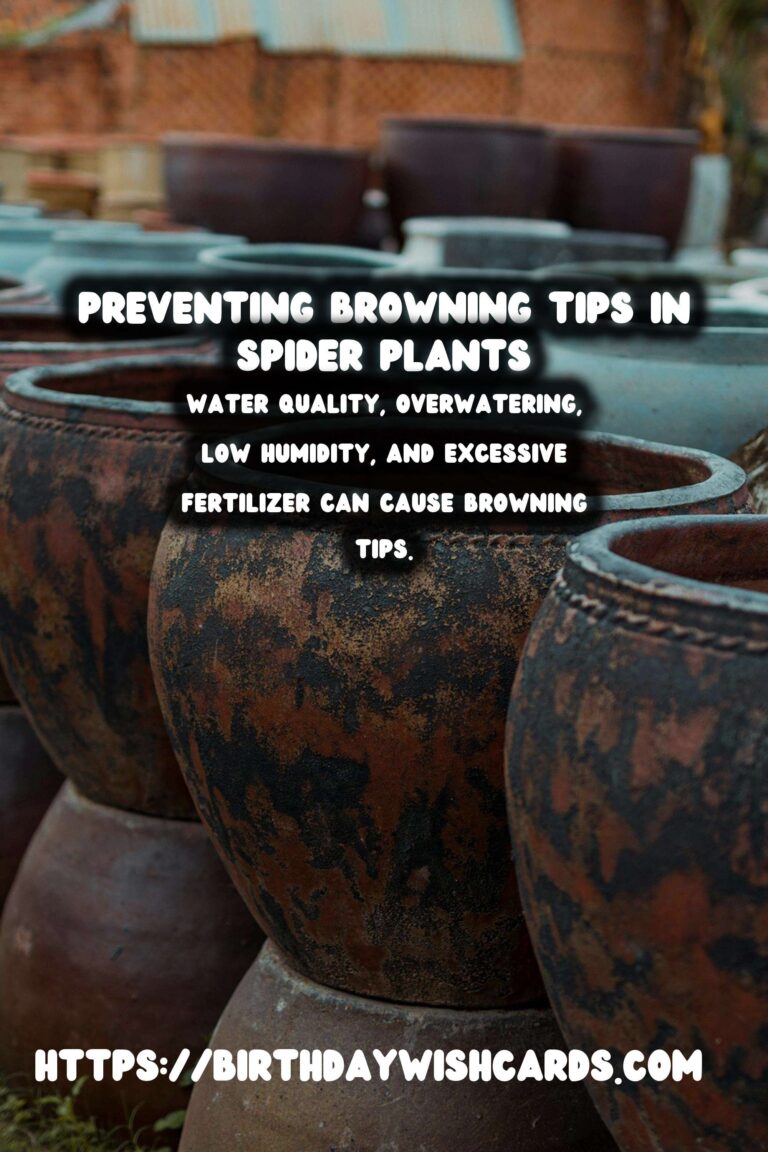


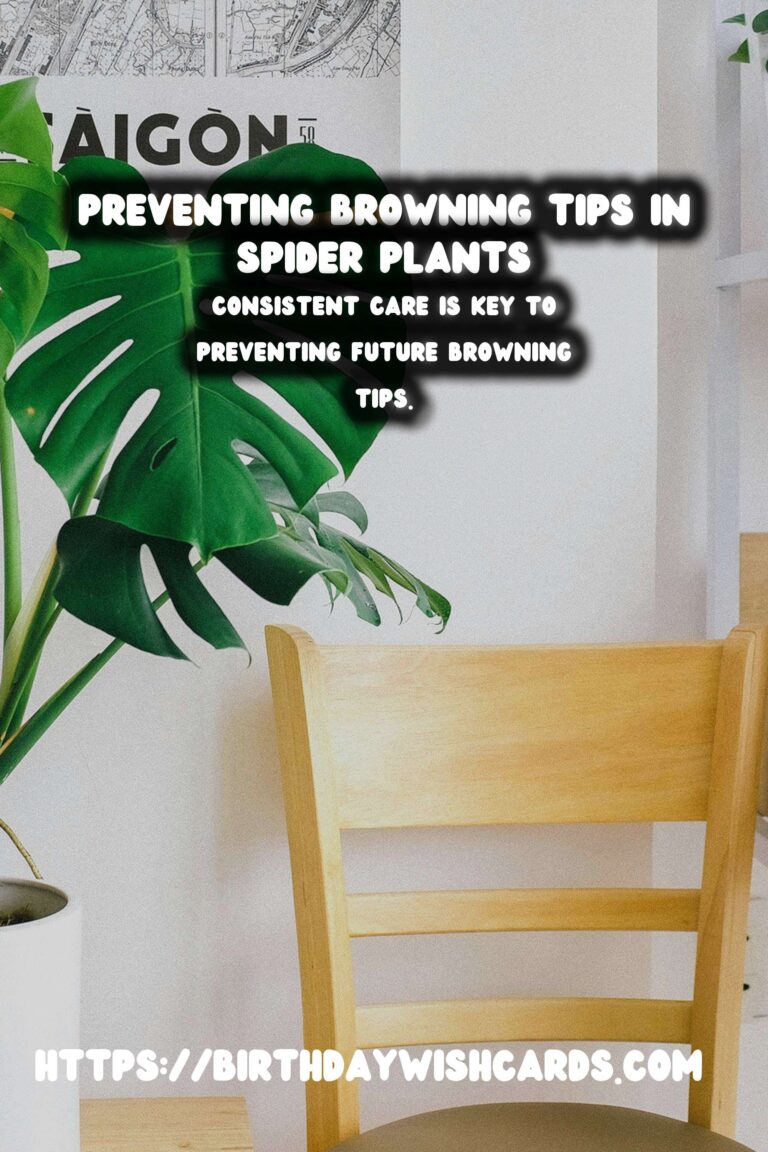
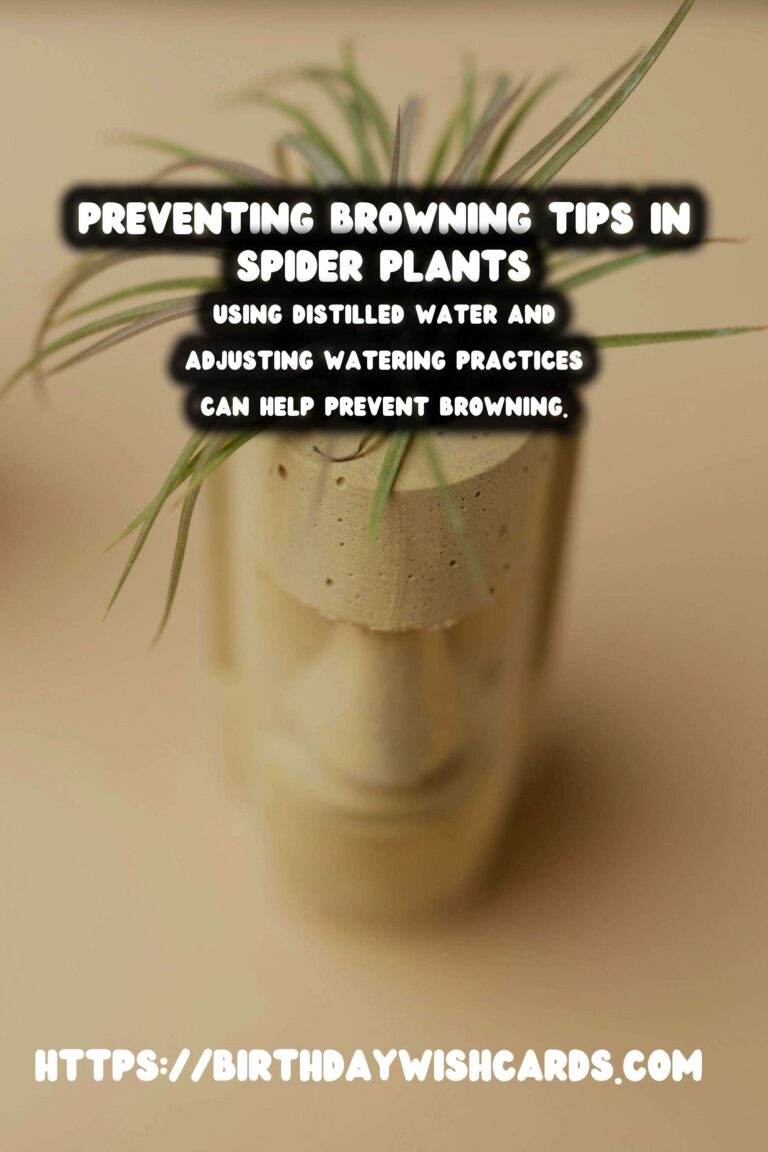
#SpiderPlants #Houseplants #GardeningTips #PlantCare #BrowningTips




